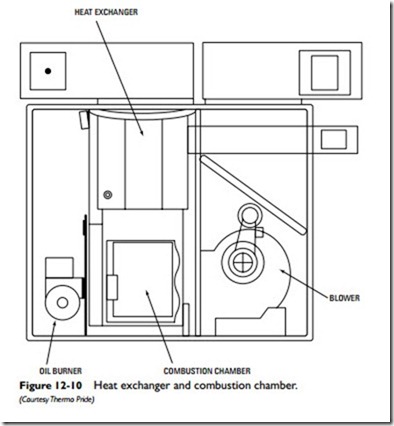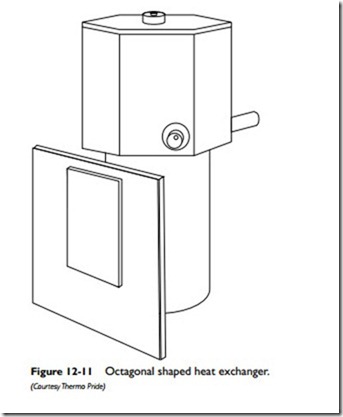Heat Exchanger
The heat exchanger assembly is the section of the furnace used to transfer the heat of the combustion process to the air being circulated through the ducts of the heating system. The heat exchanger is generally constructed of heavy gauge steel (14 and 16 gauge). The wrap-around, radiator-type heat exchanger is one of the most commonly used designs. It consists of an upper and lower chamber, each with an extension, or pouch, that must be aligned when assembled. The lower part contains the combustion chamber.
The combustion chamber is that portion of the furnace within which the combustion process takes place. It is surrounded by the lower portion of the heat exchanger. The combustion chamber must be made of a material capable of withstanding the high temperatures of the combustion process. Typical combustion chamber materials are stainless steel or some sort of refractory material such as firebrick or a kiln-fired ceramic clay. As shown in Figure 12-10, the nozzle and gun assembly of the oil burner extends through an opening in the heat exchanger to another opening in the combustion chamber.
Round exchangers are the most common type, although square, rectangular, and other shapes do occur. The octagonal heat exchanger illustrated in Figure 12-11 is specific to Thermo Pride oil furnaces.
Some modern oil furnaces are equipped with sealed combustion chambers. Their purpose is to prevent spillage and backdrafts, while at the same time increasing furnace efficiency. Furnaces with sealed combustion chambers sometimes experience startup problems
because air delivered to the burners is too cold. The cold combustion air cools the fuel oil, causing the burner ignition problem. It can be solved by warming the air before it reaches the burner.

